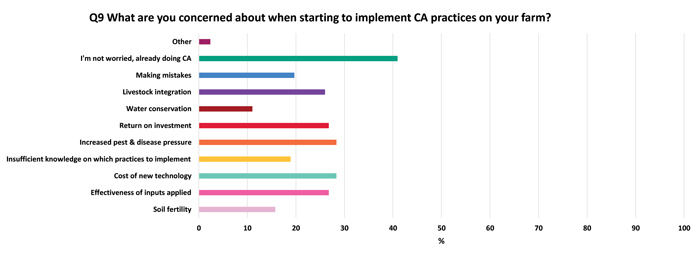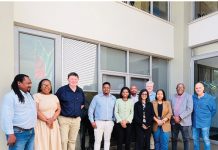Conservation agriculture (CA) is widely reported to be climate smart and to promote sustainability of farming systems. However, switching from conventional tillage to CA is far from straightforward, as the basic principles need to be adjusted for each producer’s unique circumstances.
Because of the ever-increasing threat of climate change and the possible solution CA offers, the Maize Trust has been investing in CA research since 2014. These projects are coordinated by Dr Hendrik Smith, previously the CA coordinator at Grain SA and now coordinator at Asset Research. The CA research is built on experimentation with CA practices by producers, with the programme providing technical expertise and scientific measurements. The programme is aptly named the CA Farmer Innovation Programme (CA-FIP) and where possible, links with existing study groups, such as the Ottosdal No-till Club, are made.
Recently, Grain SA conducted a survey among South African producers to determine producers’ CA research needs. This survey was conducted to ensure that the CA-FIP was still in line with what producers needed.
In total, 128 respondents completed the questionnaire, of which almost all (97%) are part of organised agriculture, including Grain SA, the South African Grain Farmers Association (SAGRA), the Transvaal Agricultural Union (TLU SA), Agri SA and the African Farmers Association of South Africa (AFASA). Importantly, 68% of respondents were already implementing CA or biological/organic farming practices.

From the survey, the main conclusions were the following:
- Producers need region-specific information.
- It appears that the CA-FIP model works well, as producers learn best via on-farm trials.
- It seems that the awareness creation regarding CA has been very successful (although more work still needs to be done).
- The gaps that research needs to address are: economic/financial aspects of CA implementation and best practices for regions.
Respondents were asked what factors most threatened their farming success – unsurprisingly, the top three factors were input costs, overheads and the cost of new technology. Other factors were access to relevant and reliable information, lack of relevant research, pests and plant diseases, weeds, technical advice and support, soil quality or health, and climate change.
The main questions respondents had about CA were:
- Which crops/cover crops would be most suitable for me to use?
- Which alternative practices/products can I use to improve soil fertility?
- Can I reduce input costs, such as fertiliser and fuel?
- Which practices are most suited to my area?
Producers were asked to rate their top concerns about implementing CA and the majority of responses indicated that the respondents did not have any concerns about implementing CA as they were already doing so. Although the rest of the concerns were quite evenly spread (Graph 1), the concerns which stood out were:
- Cost of new technology
- Increased pest and disease pressure
- Effectiveness of inputs applied
- Return on investment
- Livestock integration
Results showed that ‘water conservation’ and ‘soil fertility’ were rated as the factors of least concern. However, this does not imply that these factors are not concerning, simply that technology and inputs rank very highly. This is not unexpected given the current exceptionally high fertiliser prices.
Interestingly, ‘making mistakes’ and ‘insufficient knowledge’ ranked quite low, possibly indicating that the CA awareness campaigns worked quite well.
The most important outcomes of this survey are that CA research should focus on 1) determining best practices for a region and 2) unravelling the economic/financial aspects of CA practices.
CA-FIP has been addressing regional best practices in North West (Ottosdal), KwaZulu-Natal (Bergville, Midlands, Maluti), the Mpumalanga Highveld, the Free State (Reitz and Vrede) as well as the Eastern Cape. Beneficiaries include commercial and small-scale producers and reports can be accessed at assetresearch.org.za/.
The programme has recently investigated the benefits of converting to CA and will continue with these endeavours. The article ‘Financial benefits of converting to CA’ is available on sagrainmag.co.za.
View the results of the survey by scanning the QR code.
Contact Dr Miekie Human for further information, or comment on the research priorities identified through the survey at miekie@grainsa.co.za.

















